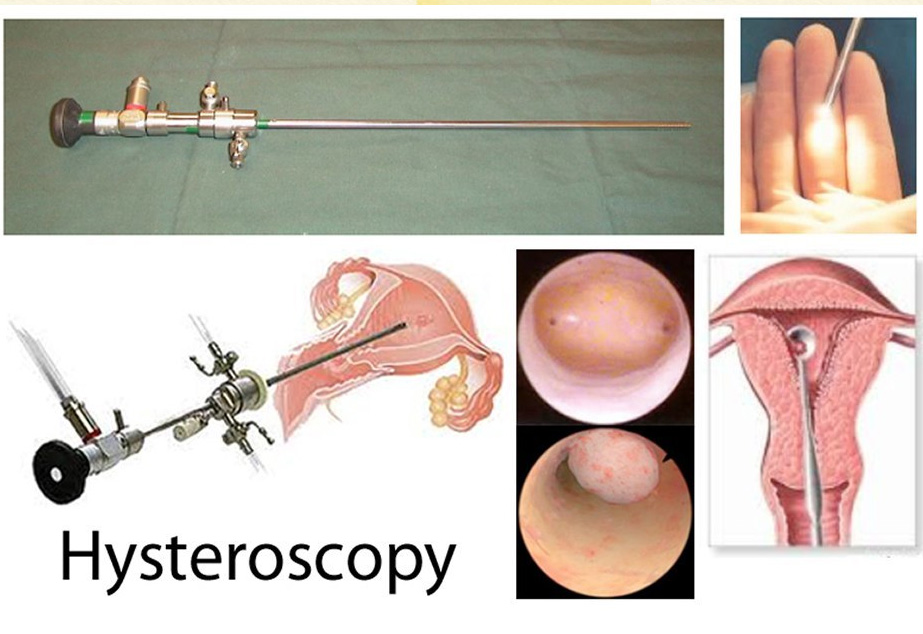Hysteroscopy

Hysteroscopy is a procedure that looks inside the womb for the evaluation of abnormal menstruation. It is a painless and short minor surgery done with a hysteroscope that is as slender as chopsticks. With high definition camera system, the inside of the womb can be examined in detail and biopsy taken if necessary.
Why do I need a Hysteroscopy?
You may need a hysteroscopy if you have
❖ irregular and frequent menstruation
❖ difficulty getting pregnant
❖ repeated miscarriages
❖ ultrasound suggestion of polyp and endometrial hyperplasia
❖ determining if fibroid is the cause of heavy menstruation
❖ a missing intrauterine device
How is it done and is it painful?
Hysteroscopy is a minor surgical procedure lasting not more than 10 minutes. It is often painless and can be done without anesthesia. Very slender instruments of 4-5mm thick are used and water is passed into the womb to expand it for a clear visualization. Most women feel some fullness during the procedure, some may experience mild cramps like at menstruation. To lessen the discomfort, medication can be taken before and after the Hysteroscopy.
What happens after I go home?
You may experience some light vaginal bleeding for the next day or two. There should be no pain or fever. To reduce the risk of infection, it is advisable not to have sexual intercourse, go swimming or use the tampon for one week. We will see you one week after the hysteroscopy to ensure that you have recovered as well as discuss the result of Hysteroscopy with you.
Are there any risks with Hysteroscopy?
The risk of Hysteroscopy is small because it is a minor procedure. The risk includes bleeding, infection, internal scarring and perforation of the womb. Overall, the risk of hysteroscopy is <0.5%.